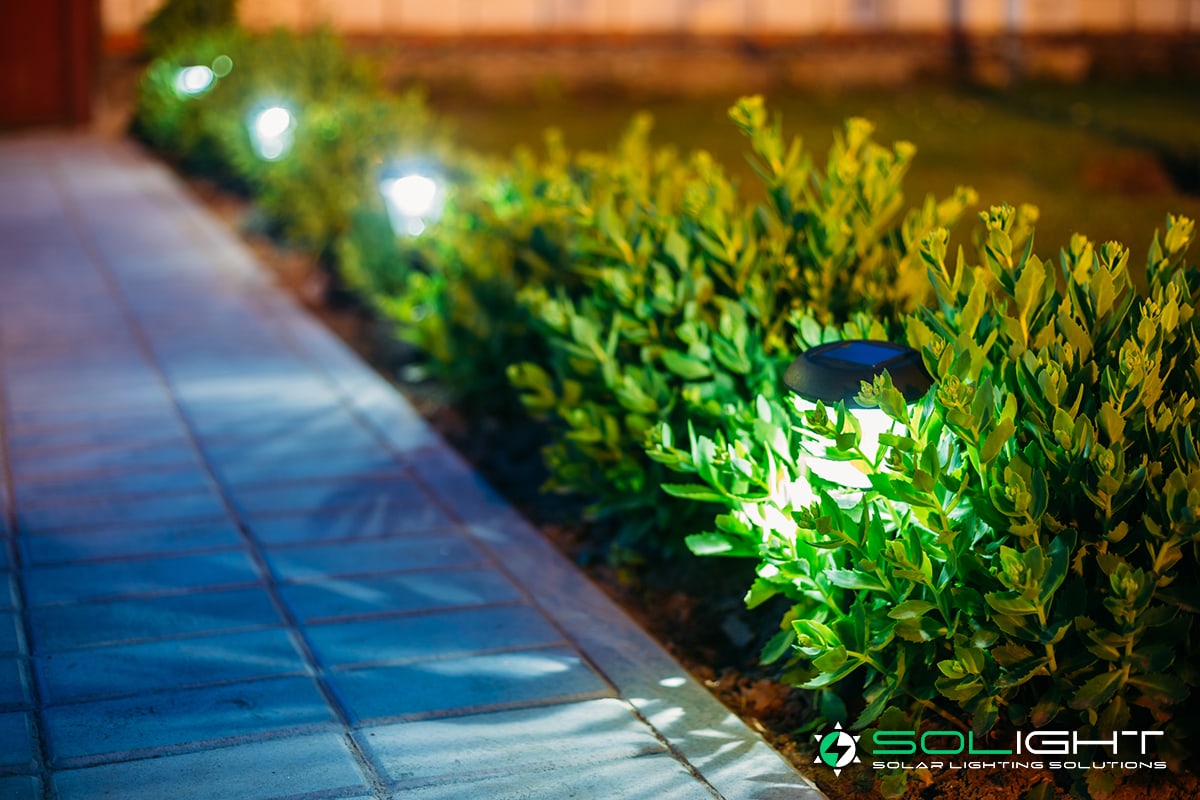Most of us tend to use our outdoor spaces a lot less in the winter – for obvious reasons! While a fantastic set of garden lights might make it more comfortable to while away cool evenings dining al fresco; when the rain and cold set in, it’s more of a fair-weather experience.
As we approach sunnier days ahead, don’t worry if you’ve neglected your solar garden lights a little.
We’ll run through a few tips to ensure you’re all set for making the most of the summer to come!
Essential Maintenance Tasks for Solar Garden Lights
It’s well worth putting a little effort into cleaning and maintaining your solar garden lights. Our products typically run for several years, so keeping them in good condition will ensure your lights shine brightly for longer.
The ESL-15 Pearl Garden Light, for example, runs for over 1,000 cycles, with one cycle lasting about three days. That’s an expected lifespan of over eight years with a little TLC.
The first thing to do is basic cleaning, removing the dirt and dust that accumulate during damp or windy weather:
- Clean your solar panels with a damp cloth.
- Don’t worry about cleaning products – anything abrasive could scratch the panels.
- Make sure you reposition your lights if necessary for maximum sun exposure.
Just like any battery, if you’ve not used your solar garden lights for a few months, you’ll want to charge the solar battery storage to maximum capacity. Finding a spot where the solar panels can soak up as much sun as possible will restore them to full power.
Solar lights won’t charge through glass or an artificial light source (they know the difference between the sun and a bulb!), so if you’ve stored your solar lighting inside, now is the time to get them back into the garden.
Troubleshooting Solar Garden Light Problems
It is unusual for a professional-grade set of solar lights to stop working without an apparent reason. Still, if you’re setting your garden space up for summer and the lights don’t seem to be operational, it’s usually a simple fix.
Begin by following the steps above.
- Dusty solar panels can’t absorb the rays well, so giving them a decent clean should ensure your battery can start to recharge.
- If the light is weak, it’s probably because the battery is running flat. Again, clean the panel, and then position your light somewhere with adequate sun exposure.
- SoLight products, like the ESL-25 Pearl 2 Garden Light, provide up to seven days of continuous light on one charge. If you’re struggling to turn on your light after a few months in storage, you likely need to allow it to recharge to maximum volume to restore proper functionality.
- Check that you haven’t left the manual switch set to off (it’s an easy mistake to make). While most of our ranges have automated sensors, they also allow manual programming, so you may simply need to switch the light back to automatic.
Each solar garden light works a little differently, but whether you have solar pathway lights, wall-mounted solar lighting or security floodlights, these easy solutions will usually mean your lighting works smoothly.
Safe Storage For Outdoor Solar Lighting
Making sure your lights are correctly stored over winter is essential, although many people choose to leave their solar lighting working year-round, so packing them away isn’t vital.
If you do put your solar lights into storage for over three days, there are some straightforward ways to ensure you don’t inadvertently damage the rechargeable solar batteries:
- Always store your lights somewhere dry, without exposure to rain or dampness.
- Ideally, the storage should be room temperature, particularly in freezing weather.
- Try finding a spot where your lights receive at least a little sunlight, which means the battery maintains a charge and doesn’t run entirely flat.
- If you’re storing lights for several months, the best maintenance tip is to charge and then discharge them every three months.
- It’s best not to store solar lights in a box or dark room without any light source.
When batteries run flat, it can take longer to recharge them, so a bit of light will help maintain your landscape lighting with minimal maintenance. The best spots to store lights are near a window or door; somewhere they won’t get in the way of foot traffic – perhaps in a utility space, garage or storage area.
Before your solar lights are ready to get back to work, we’d advise running them through around five or ten cycles, charging during the day and discharging at night. This process will prompt the battery to return to ample power and deliver the bright, reliable illuminations you expect!
Keeping Garden Solar Lights Outside Year-Round
SoLight garden lighting solutions are designed to be 100% waterproof, with innovative IP65 waterproof accreditation as featured on our Mars 2 2000 Lumen Security Light.
That certification means that the casing is precisely engineered to withstand water ingress and deliver outstanding performance across a longer lifespan. However, less powerful decorative lights aren’t always as advanced. They will usually shine slightly dimmer during the winter when they aren’t receiving a full charge and don’t have sufficient battery performance.
Therefore, if you’re looking for solar garden lights that you won’t need to store or move in the winter, it’s advisable to check the rating on your chosen product. We’re delighted to confirm that every product in the SoLight Garden Lights range carries the same rating, so all are suitable for year-round use, whatever the weather!
That said, when you’re preparing your solar garden lights for summer, the same cleaning tips apply, ensuring your lights are free from debris and particles that could impact their ability to reach total capacity.
If you’d like any further advice about preparing your solar garden lights for the warmer months, please get in touch with the SoLight team for friendly advice!





